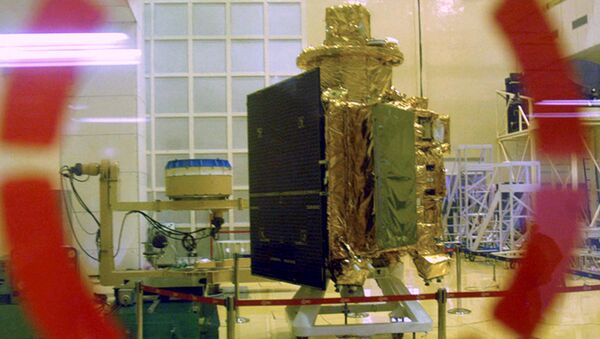New Delhi (Sputnik) – The Indian Space Research Organization (ISRO) is heading for another milestone with the launch of its second lunar mission in the first quarter of 2018. The flight integration activity for the mission named Chandrayaan-2 has already begun and IRSO is upbeat that the $ 91 million mission would be successful as anticipated.
"Things are going on. The orbiter is getting ready. Flight integration activity is going on, and a series of tests are planned for lander and rover. They are all in progress and we are working towards the first quarter (of 2018) launch of Chandrayaan-2," AS Kiran Kumar, ISRO Chairman told the PTI.
Chandrayaan-2: Isro begins flight integration activity for next lunar mission —… https://t.co/RdA9UOvTcv #ISRO #GSLV #PSLV #space #launch pic.twitter.com/PzkrRhYsKY
— Jayasimha (@jayasimha29) October 26, 2017
The Chandrayaan-2 comprises indigenously built orbiter, lander, and rover. After reaching the 100 km lunar orbit, the lander housing the rover will separate from the orbiter. After a controlled descent, the lander will soft land on the lunar surface at a specified site and deploy a rover. The instruments on the rover will then start collecting data for analysis of the lunar soil.
.@isro testing lander, rover for Chandrayaan-2; plans launch in March 2018 https://t.co/2HiDOjpdAx pic.twitter.com/1XOZGDsSpS
— NDTV (@ndtv) October 25, 2017
During 2010, it was agreed that Russian Space Agency ROSCOSMOS would be responsible for preparing the Lunar lander and ISRO will be responsible for orbiter and rover as well as the launch. Later, due to a shift in the programmatic alignment of this mission, it was decided that the lunar lander development would also be done by ISRO and that the Chandrayaan-2 would be an exclusively Indian mission.
READ MORE: India’s Space Agency Begins Countdown for Launch of Backup Navigation Satellite
Nevertheless, Russian company JSC Isotope is supplying Radionuclide curium-244 (Cm-244) for Chandrayan-2 that enables the mission to determine the chemical composition of rocks and soils.
"It (Chandrayaan-2) differs from the previous one (Chandrayaan-1) in the sense that in the last one, we had moon impact probe that descended on the moon in an uncontrolled manner, whereas this (Chandrayaan-2) will carry a lander, which will descend on the surface of the moon in a controlled manner," AS Kiran Kumar said.
While the main objective of the mission is to see if ISRO can soft-land a spacecraft on the Moon, the Orbiter craft will also conduct mineralogical and elemental studies of the Moon’s surface from orbit. Meanwhile, the Rover will have two scientific payloads for chemical analysis of the soil. It will also have a high definition camera to take pictures of the soil and rocks on site.




